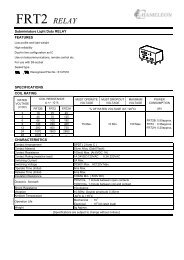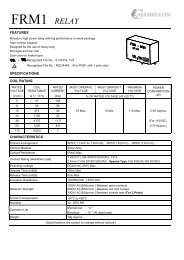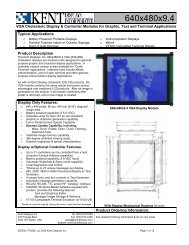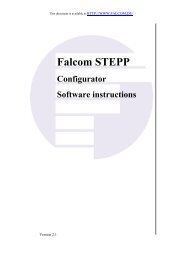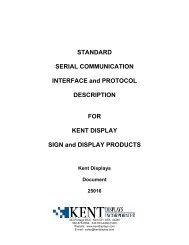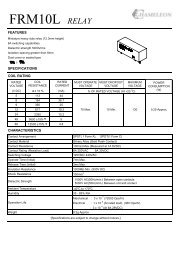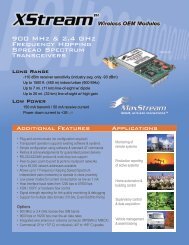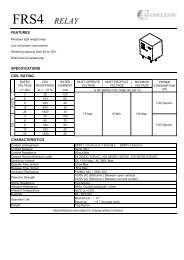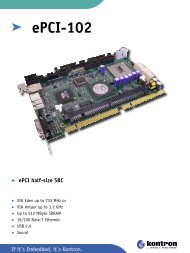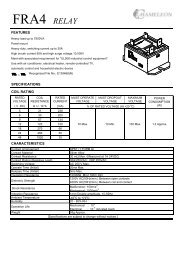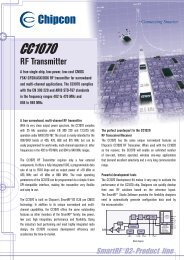XStream⢠Advanced Programming & Configuration
XStream⢠Advanced Programming & Configuration
XStream⢠Advanced Programming & Configuration
You also want an ePaper? Increase the reach of your titles
YUMPU automatically turns print PDFs into web optimized ePapers that Google loves.
XStream <strong>Advanced</strong> <strong>Programming</strong> & <strong>Configuration</strong> – <strong>Advanced</strong> Manual v4.2A<br />
Basic methods for sending AT Commands.<br />
Example: Both of the following examples change the XStream Module’s destination address to<br />
0x1A0D and save the new address to non-volatile memory.<br />
Method 1 (One line per command)<br />
Issue AT Command<br />
System Response<br />
+++ OK (Enter into AT Command Mode)<br />
ATDT 1A0D<br />
OK (Change Destination Address)<br />
ATWR<br />
OK (Write to non-volatile memory)<br />
ATCN<br />
OK (Exit AT Command Mode)<br />
Method 2 (Multiple commands on one line)<br />
Issue AT Command<br />
System Response<br />
+++ OK<br />
ATDT 1A0D, WR, CN<br />
OK-<br />
OK (Write to non-volatile memory)<br />
OK (Exit AT Command Mode)<br />
Exit AT Command Mode<br />
To exit AT Command Mode:<br />
= Carriage Return<br />
1. If no valid AT Commands are received within the time specified by CT (Time before Exit AT<br />
Command Mode) Command, the module automatically returns to Idle Mode.<br />
2. AT Command Mode can be exited explicitly by issuing CN (Exit AT Command Mode)<br />
Command.<br />
Binary Commands<br />
The DI2- /CMD pin (Pin 5) must be asserted in order to send binary commands to an XStream<br />
Module. The /CMD pin can be asserted and sent a command anytime during transmission or<br />
reception of data. There is a minimum time delay of 100 microseconds (after the stop bit of the<br />
command byte has been sent) before which /CMD can be de-asserted. The command<br />
executes when all parameters associated with the command have been sent. If all parameters<br />
are not received within 0.5 seconds, the module returns to Idle Mode. Note that when<br />
parameters are sent, they are always two bytes long with the least significant byte sent first.<br />
Binary Command Mode also allows multiple commands to be sent in sequence. When the<br />
/CMD pin is asserted, all incoming serial data will be interpreted as commands. Commands<br />
can be sent in sequences of commands and their associated parameters. If /CMD remains<br />
asserted, all received commands will be executed by the XStream Module. All modified<br />
parameters must be stored in non-volatile memory by sending WR (Write) Command (0x8 with<br />
no parameters) before powering down or resetting the module or the changes will be lost.<br />
Commands can be queried for their current value by sending the command logically ORed with<br />
the value 0x80 (hexadecimal) with /CMD asserted. When the binary value is sent (with no<br />
parameters), the current value of the command parameter is sent back through the DO pin.<br />
IMPORTANT:<br />
For the XStream Module to recognize a binary command, RT Command must be<br />
issued. If binary programming is not enabled, the module will not recognize when<br />
the /CMD pin is asserted and will therefore not recognize binary commands.<br />
© 2004 MaxStream, Inc., Confidential and Proprietary 23



